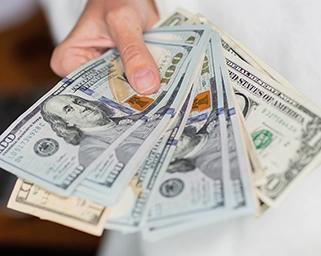Stack HVAC Tax Credits and Rebates and Save Big
Can you stack HVAC tax credits and rebates? You sure can! Discover all the ways to save on a new qualified HVAC system.
By Anne Fonda
The Inflation Reduction Act of 2022 (IRA) is a federal law passed during the Biden administration that aims to reduce the budget deficit, lower prescription drug prices, and promote more affordable energy.
To encourage American homeowners and renters to embrace clean energy and reduce carbon emissions, the IRA offers multiple incentives. These include clean energy tax credits, including HVAC tax credits. It also provides funding to states to administer HVAC rebates - with heat pump tax credits and heat pump rebates being the largest financial incentives.
The tax credits are available to homeowners, regardless of income. The IRA rebates may be available based on income. Each state will have different income guidelines. Your HVAC partner can help you explore your options.
HVAC tax credits vs HVAC rebates
When considering how to take advantage of all of the financial incentives for upgrading to a more energy-efficient HVAC system, it helps to understand the difference between federal tax credits and state and local rebates.
According to the IRS, a tax credit is a dollar-for-dollar amount that you can claim on your tax return to reduce the amount of tax that you owe.
A rebate, on the other hand, is a point-of-sale discount or delayed refund. How these rebates work depends on what entity is offering them.
Let’s take a look at all of the possibilities.
Inflation Reduction Act Tax Credits
What is the Inflation Reduction Act HVAC tax credit?
The IRA provides a federal tax credit for heat pumps, air conditioners, and gas furnaces that meet one of the CEE Tier 1 Paths. Each unit must meet stringent energy efficiency requirements and must be installed as part of a matched system.
A matched system can include:
- Heat pump + air handler
- Heat pump + furnace (dual fuel heat system)
- Air conditioner + furnace
HVAC tax credits for qualified units fall under the Energy Efficient Home Improvement Tax Credit and include:
- $2,000 tax credit for electric heat pumps (ducted or ductless mini-split)
- $600 for qualified central air conditioners
- $600 for a qualified gas, oil, or propane furnace
As you can see, the heat pump federal tax credit is the largest. That’s because the IRA puts a focus on moving away from single direction Air Conditioners and towards super-efficient electric heating and cooling systems.
For split system air conditioners, air conditioners with SEER2 at or above 17 and EER2 of 12 and above are eligible.
For gas furnaces, gas furnaces with AFUE at or above 97% are eligible.
For heat pumps, your region and whether you’re choosing a ducted or ductless mini-split heat pump matters.
Ducted
AIr Source Heat pump CEE Tier 1
Path A: heat pumps with
- SEER2 > 16
- EER2 > 9.8
- HSPF2 > 8.5
- COP @ 5°F > 1.75
- Capacity Ratio > 60% at 5F/47F
Path B: heat pumps with
- SEER2 > 16
- EER2 > 11
- HSPF2 > 8.0
- COP @ 5°F > 60%
- Capacity Ratio > 45% at 5F/47F
Packaged Heat Pumps:
- SEER2 > 15.2
- EER2 > 10
- HSPF2 > 7.2
- COP @ 5°F > 1.75
- Capacity Ratio > 45% at 5F/47F
It depends on if you are buying an air conditioner or a heat pump. See the question above for efficiency ratings for each category.
It’s important to know that you can stack the HVAC tax credits with tax credits for other energy-saving home improvements, up to a maximum of $3,200 (if you include heat pump technology) each year until 2032. Without heat pump technology, the yearly cap is $1,200.
There is no lifetime limit, so you can make qualified home improvements each year and claim the corresponding tax credit.
See the table below for examples.
*Subject to cap of $1,200/yr
Source: energy.gov
Inflation Reduction Act rebates
But wait. There’s more. The Home Energy Rebates program under the IRA covers two energy rebate programs. They are the Home Efficiency Rebates (HER or HOMES) program and the Home Electrification and Appliance Rebates (HEAR) program. HEAR is also known as the High-Efficiency Electric Home Rebate Act (HEEHRA) in some states.
Which federal government rebate program you choose to participate in will depend on your project and your income. Both programs include incentives for electrification. From energy.gov:
Home Efficiency Rebates
- Recommended when you’re taking a comprehensive set of actions to reduce your home’s energy usage.
- All households are potentially eligible, with the largest rebates going to those with lower incomes.
- You can save up to $8,000 depending on your household income and the project’s energy savings.
- Your project will need to reduce your home's energy usage by at least 20% and be verified by approved modeling software
- Qualified projects include heat pump conversion, HVAC upgrades, window and replacement, and insulation upgrades.
Home Electrification and Appliance Rebates
- Recommended when you’re upgrading equipment and appliances in your home AND your household income is similar to or below the average in your area.¹
- Provides households with up to $14,000 in rebates.
- Covers up to 100% of costs for lower-income families and up to 50% for moderate-income families.
Don’t automatically think you don’t qualify because of the “low and moderate-income” phrasing. In some parts of the country, 150% of AMI is more than $140,000.
Your state will determine which products are eligible for energy rebates from the following list — you can save up to:
- $8,000 for an ENERGY STAR-certified electric heat pump for heating and cooling.
- $4,000 for an electrical panel.
- $2,500 for electrical wiring.
- $1,750 for an ENERGY STAR-certified electric heat pump water heater.
- $1,600 for insulation, air sealing, and mechanical ventilation products.
- $840 for an ENERGY STAR-certified electric heat pump clothes dryer and/or an electric stove, cooktop, range, or oven.
¹ Only families making less than 150% of their area median income are potentially eligible. Individual states, territories, and Tribes can set this income cap at a lower level. In 2022, 150% of the national median income was roughly $110,000. Your area’s median income could be significantly higher or lower.
How to apply: Since these Inflation Reduction Act rebates are administered by the states, you will need to apply through your state energy department. Use the Department of Energy (DOE) tracker to see where your state is in the process of taking applications and distributing these energy rebates.
Good news for Floridians: After rejecting the IRA funds last year, Florida’s new fiscal year budget includes more than $346.3 million, which is the state’s share of the IRA’s Home Electrification and Appliance Rebates (HEAR) program. It will offer direct-to-consumer rebates for the purchase of qualifying appliances, including up to $8,000 for a heat pump. Florida hopes to have its rebate program underway in early 2025.
To qualify for the IRA heat pump rebate or other rebates, you will need to use a state-certified heat pump installer, electrician, or other contractor.
Local rebates
Local HVAC rebates may be offered by a state (separate from the IRA rebates) or by a city or other local municipality. Heat pump rebates are the most common. For example, MassSave has had a heating and cooling rebate program for years. If your state has such a program already in place, check with them to see if you can claim the federal heat pump rebates and the state rebates at the same time.
Utility rebates
Utility rebates are generally offered after you have a qualifying HVAC system installed. You have to show proof of installation to your utility company, and once you’re approved, they send you a check. Many utility companies across the country offer rebates for things other than HVAC systems, including:
- ENERGY STAR®-certified appliances
- Insulation and air sealing
- Bathroom ventilation fans
- Air purifiers
- Dehumidifiers
- Room air conditioners
- Heat pump water heaters
Check with your utility company directly or use the ENERGY STAR® rebate finder to find tax credits and rebates you might be eligible for. The tool covers more than HVAC tax credits and heat pump rebates.
HVAC manufacturer rebates
In addition to all of those financial incentives, some HVAC manufacturers (including Trane) also offer rebates when you buy certain high-efficiency HVAC systems. These rebate programs are common in the spring and fall.
With all of these tax credits and rebates, now is a great time to upgrade your HVAC system.
Stacking tax credits and rebates
Stacking rebates and tax credits is not only allowed, it’s encouraged, as long as the total amount doesn’t exceed the cost of the project. Each state and existing program has regulations and limitations, so be sure to read the fine print.
For tax credits, if you also receive a subsidy from your utility company, you may not claim a tax credit for the amount of the subsidy. Source: IRS Fact Sheet FS-2022-40
You may want to consider working with a tax professional to ensure you file correctly.
Work with HVAC experts you can trust
Now is a great time to replace an aging and inefficient HVAC system. Maximize your tax credits and rebates with a new heat pump system, whether that’s a heat pump replacement or gas furnace to heat pump conversion. You may also qualify for HVAC tax credits if you replace a traditional AC unit and gas furnace.
A new HVAC system is only as good as its installation. Be sure to work with heating and cooling specialists who are experienced in proper sizing and expert HVAC installation. You also want HVAC pros who can help you take advantage of all of the financial incentives.
Our network of dealers has the experience you need. Find your local HVAC expert now.
Anne Fonda
Content Writer, Trane Technologies
A Content Writer with Trane Technologies, Anne Fonda researches topics and writes for Trane® and associated residential HVAC brands. She works in collaboration with Trane Technologies subject matter experts, offering easy-to-understand, informative content on complex topics. Her goal is to help consumers make informed decisions on the products and services they need.
She has written for HVAC and other service provider websites for over 16 years. Before transitioning to web content writing, Anne had a 14-year stint as an award-winning journalist. She graduated cum laude from the University of Missouri-Columbia School of Journalism.
When she’s not working, Anne enjoys playing word games, reading, gardening, spending time with family, and visiting gardens and museums.
Expert review by Josef Hejda, Electrification Commercialization Leader




